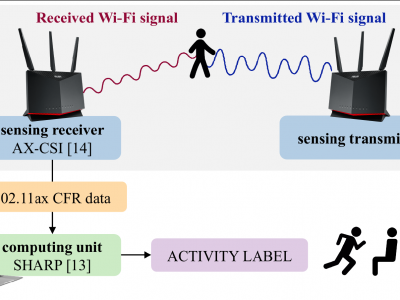Machine Learning
The I Scan 2 scanner from Cross-Match Technologies was used to acquire all data. Iris images are captured in near-infrared wavelength band (700-900 nm) of the electromagnetic spectrum. All images were acquired in SAP laboratory of computer science and engineering department of Dr. Babasaheb Ambedkar Marathwada University, Aurangabad. The subject images were acquired during the span of 7 to 8 months in years 2017 and 2018. GMBAMU-IRIS dataset contains total 5616 images from 312 subjects.
- Categories:
 438 Views
438 ViewsMost of the existing human action datasets are common human actions in daily scenes(e.g. NTU RGB+D series, Kinetics series), not created for Human-Robot Interaction(HRI), and most of them are not collected based on the perspective of the service robot, which can not meet the needs of vision-based interactive action recognition.
- Categories:
 368 Views
368 ViewsThe Phoenix Contact Relay (PCR) dataset is provided for the development of algorithms for the analysis of lifetime data. It differs from previously published datasets in the number and complexity of measurements, as well as the scope of units tested and the practical relevance of the data. Thus, it provides an opportunity to develop and evaluate new concepts for predictive maintenance. The PCR data set presented includes the life data of 546 relays with a total of more than 106 million switching cycles, collected over a period of several years at a sampling rate of 10 kHz.
- Categories:
 496 Views
496 ViewsThe dataset includes channel frequency response (CFR) data collected through an IEEE 802.11ax device for human activity recognition. This is the first dataset for Wi-Fi sensing with the IEEE 802.11ax standard which is the most updated Wi-Fi version available in commercial devices. The dataset has been collected within a single environment considering a single person as the purpose of the study was to evaluate the impact of communication parameters on the performance of sensing algorithms.
- Categories:
 2740 Views
2740 ViewsThis dataset contains CIRs from 23 different positions in an industrial environment, as illustrated in the picture.
These originate from a tag-anchor pair configured with two-way-ranging for distance estimations. In total, 21 anchors are placed in the area, allowing both Line-of-Sight (LOS) and Non-LOS (NLOS) signal propagation, as illustrated in the picture.
The aim during the data collection proces was to measure UWB ranging errors in (N)LOS environments. As such, the ground truth of each position was measured using a laser.
- Categories:
 642 Views
642 ViewsThis dataset contains IQ samples captured over-the-air in six different locations in Gent, Belgium (UZ, Reep, Rabot, Merelbeke, iGent and Gentbrugge). Each location has unique data characteristics (e.g. different signal strength and noise levels) due to different physical signal propagations. As an example, these differences in two locations (top two and bottom two rows) are displayed on the spectrograms.
- Categories:
 957 Views
957 ViewsWe provide a dataset with IQ signals captured from multiple Sub-GHz technologies. Specifically, the dataset targets wireless technology recognition (machine learning) algorithms for enabling cognitive wireless networks. The Sub-GHz technologies include Sigfox, LoRA, IEEE 802.15.4g, IEEE 802.15.4 SUN-OFDM and IEEE 802.11ah. Additionally, we added a noise signal class for allowing detection of signal absence.
- Categories:
 845 Views
845 ViewsThe rocket nose-cone shapes have been generated by blending few conic sections together (two conic sections in one) and the simulated against mach number regime from subsonic through transonic to supersonic. The aerodynamic drag coefficients have been recoded for each shape for each mach number.
- Categories:
 462 Views
462 Views
This dataset contains trained weights to predict ECG abnormalities.
- Categories:
 36 Views
36 Views
This folder consists of codes, dataset, and models.
- Categories:
 17 Views
17 Views




